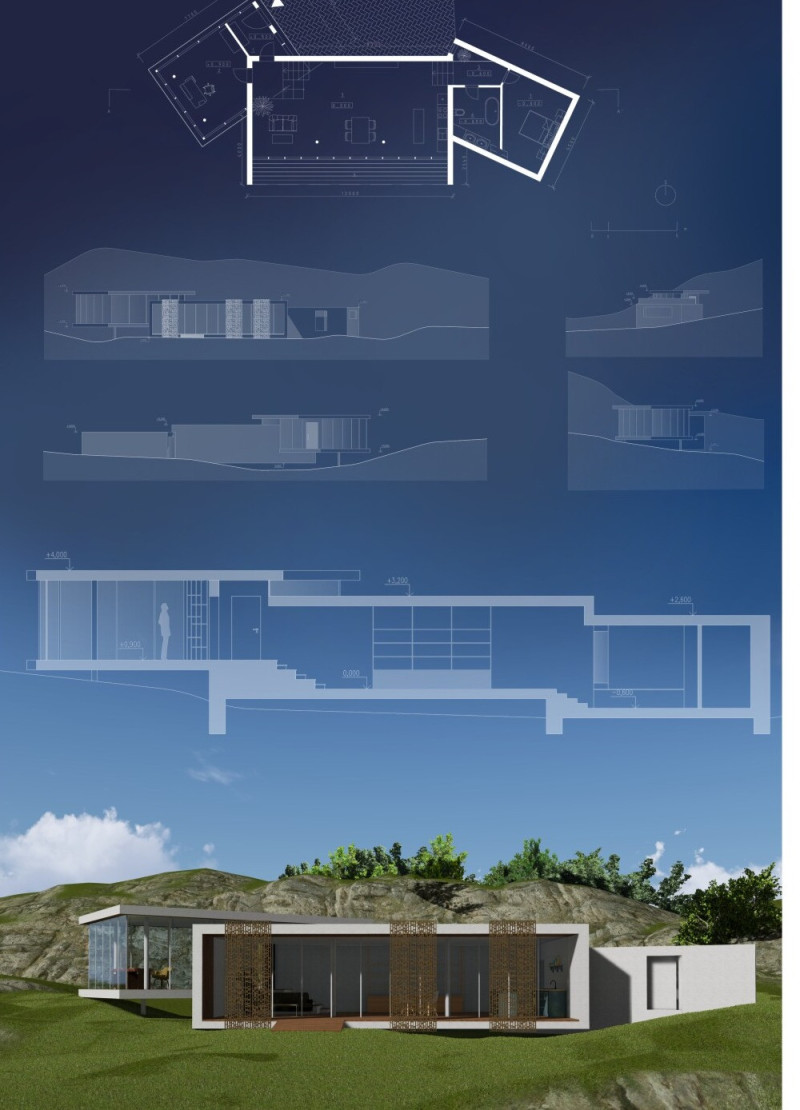5 key facts about this project
## Project Overview
Located in a glacially influenced landscape, the structure reflects a deep interaction between architectural form and the psychological experiences of its inhabitants. The design aims to engage with elements of light and shadow, providing a spatial narrative that traverses varying states of human consciousness. This approach informs both the overall layout and the specific characteristics of each designated area within the dwelling.
### Spatial Strategy
The layout of the dwelling is strategically divided into three zones that correspond to psychological phases: **Consciousness**, **Preconsciousness**, and **Unconsciousness**. The **Consciousness** area is designed to maximize light and promote activity, creating an open and vibrant environment. The **Preconsciousness** zone functions as a transitional space, facilitating moments of contemplation through softer lighting. Finally, the **Unconsciousness** area, characterized by minimal light, offers a tranquil retreat intended for rest and introspection. This thoughtful division fosters an intuitive relationship between space and mental states, resonating with users on multiple levels.
### Materiality and Construction
The selection of materials plays a significant role in achieving the project’s conceptual focus. Concrete is employed as the primary structural element, ensuring durability while contributing to a minimalist aesthetic. Warm wood accents provide comfort and a tactile connection to the environment, used strategically to soften the starkness of the concrete. Expansive glass panels frame views of the surrounding landscape, enhancing the relationship between interior and exterior spaces and emphasizing the interplay of light and shadow throughout the day.
Visual elements further enrich the architectural narrative: slender columns enhance openness and elevate the roof, while overhangs and canopies offer protection from the elements. The contrasting textures of smooth concrete, warm wood, and transparent glass create a sensory-rich experience that invites exploration and interaction. Through this integration of materials and design principles, the dwelling not only functions effectively but also fosters a deeper psychological engagement with the environment.



















































